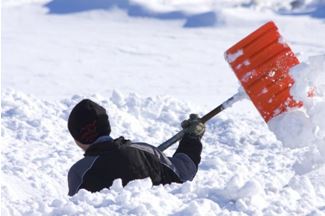It seems there's a never ending to-do list for small business owners, and insurance is squarely up there with the rest of the responsibilities.
Snow Removal Injury Prevention
Common snow removal injuries and medical emergencies include overexertion of muscles, falling, lower-back injuries, broken bones, and heart-related problems. The arms and hands are the most common area for bone fractures, while adults over 55 were more than four times likely to have heart-related symptoms while shoveling, compared to younger people. Preventing falls includes those that occur while workers are removing snow from rooftops or other elevated surfaces. To keep workers safe, employers should develop plans for snow removal methods that do not involve workers being on rooftops. Safe working tips include: 1. Dressing appropriately – Wearing layers of clothing allows for both ventilation and insulation. Keep the head warm, as this is where a lot of body heat escapes. …
Protect your business from ransomware in 2017 [Video]
With record-setting numbers of cyberattacks occurring each day, businesses are stumped as to how they can avoid becoming the next target.
What to do if your identity has been stolen [Video]
Whether your credit card was lost and used, or you've suffered from a full blown identity theft, the experience can be frightening.
Prevent the spread of the avian flu this season
After the United States experienced the worst outbreak of avian flu in American history in 2015, the industry is looking to better protect itself this time around. Here’s what you need to know.
5 warning signs to spot identity theft [Video]
Identity theft is no laughing matter. Thieves can open new credit cards in your name, cash in your tax refund and even use your medical insurance for treatment.
Medigap plan C and F to be eliminated in 2020 [Video]
Two of Medigap's most popular options are on the chopping block for 2020 due to a new law barring their coverage in Medicare part B deductibles—but what does this mean for you?
New OSHA Rule Effective January 1, 2017 Hits Big Companies First
New reporting regulations are effective January 1, 2017. What has to be published? According to OSHA as of “Jan. 1, 2017, [OSHA]requires certain employers to electronically submit injury and illness data that they are already required to record on their onsite OSHA Injury and Illness forms.” This is covered employers who have 250 or more employees. According to the guidance: OSHA will provide a secure website that offers three options for data submission. First, users will be able to manually enter data into a webform. Second, users will be able to upload a CSV file to process single or multiple establishments at the same time. Last, users of automated recordkeeping systems will have the ability to transmit data electronically via …
Does your company need a benefit enrollment system? [Video]
Healthcare benefits have become a major point of interest to current and prospective employees when it pertains to a company's culture, but they can also be difficult to manage within human resources departments.
- Page 1 of 2
- 1
- 2




